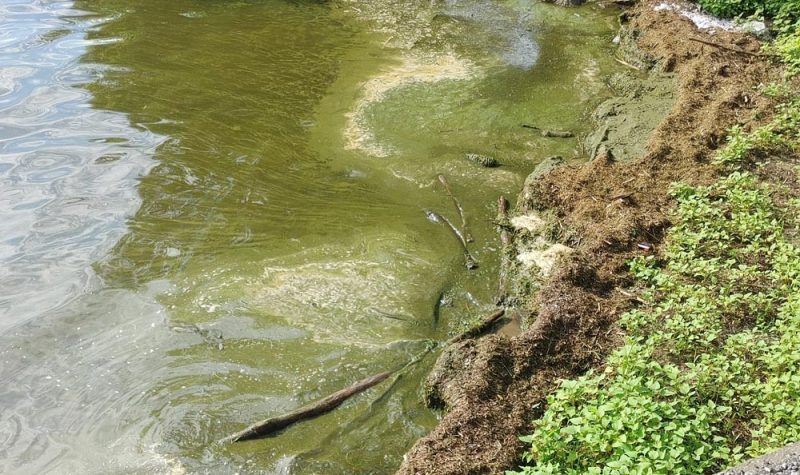L’Organisme bassant versant de la baie Missisquoi (OBVBM) is warning Brome-Missisquoi citizens to remain cautious of the presence of cyanobacteria in the region’s lakes and rivers as we head further into September.
According to the organization, the unprecedented amounts of precipitation over the summer and the more recent periods of warm weather has resulted in the appearance of what is commonly known as blue-green algae blooms in some of the region’s water bodies. Due to the heavy rains, run-off water carrying sediments filled with phosphorus, which feeds the blooms, is also seen as a contributing factor to these outbreaks.
Aubert Michaud, associate researcher for the OBVBM, said that while the situation is getting better, there is still a cause for concern due to what the organization has been observing throughout the last few months.
“Today, the situation is, let’s say, calming down, but cyanobacteria blooms have been pretty severe this summer, and late too. We are experiencing cyanobacteria blooms in baie Missisquoi right now and in Carmi Lake in Vermont, which is a source of the Pike River,” explained Michaud. “(…) We have to be cautious of those cyanobacteria present in those lakes and rivers because they are really awful.”
The Missisquoi Bay is located at the northern tip of Lake Champlain and the watershed is divided between Quebec and Vermont. Its dominant rivers include the Rock River, the Missisquoi River, and the Pike River. The Pike River runs through and number of Brome-Missisquoi municipalities, including Frelighsburg, Bedford, St-Armand, and Stanbridge East.
“The thing is, the Pike River itself will be impacted from the cyanobacteria travelling down from Carmi Lake and maybe some additional nutrient input on the way. We’ve been having a lot surface run-off, a lot of sediments and phosphorus is transported to the lake and river systems, especially this summer,” explained Michaud. “The phosphorus is the main trigger of those blooms.”
According to Michaud, most of the phosphorus entering Missisquoi Bay waters in Brome-Missisquoi stems from farmland surface run-off (around seventy per cent) and sewage water run-off due to outdated wastewater treatment infrastructures in the region.
“It’s [everyone] that can contribute, but especially the farmlands where we have, of course, mineral phosphorus to fertilize the crops. When we get such intense precipitation, the soil gets saturated so the water runs down the surface and this is where it picks up fine sediments that carries phosphorus, going from the fields, to the ditch, to the streams, and ultimately to Missisquoi Bay,” he said.
Michaud mentioned that he has seen a lot of initiative on part of the farming community, municipalities, and the general population to reduce their phosphorus input over the last decade or so.
For example, farmers are now leaving the natural residue that is found on the surface of some crops, they are creating cover crops, and they are “optimizing their manure management” to limit surface run-off during the dominant run-off season, which is usually in the spring. Municipalities, including Notre-Dame-de-Stanbridge, have also started to replace their wastewater treatment infrastructures and they are implementing their own projects, such as financial aide programs for rainwater gardens, to encourage citizens to play their part.
“It’s a concerted effort from Vermont and Quebec to reduce the phosphorus loading out there. Actually, in 2021 the government of Quebec renewed an agreement with Vermont to meet those target phosphorus concentrations (25 micrograms of phosphorus per liter of water) for Missisquoi Bay,” he said.
Despite these actions however, the current situation has made it clear that more needs to be done to implement projects that can help protect our lakes and rivers, noted Michaud, and that people need to remain vigilant.
“There’s opportunities out there for financial support, especially regarding covered crops. (…) For the overall community, we might get some warm weather again, we haven’t finished with summer yet. Again, be cautious. If you see some blue-green algae, [avoid] having your children, yourself, and even your animals from going in that water,” he said.
Listen to the full interview below:


